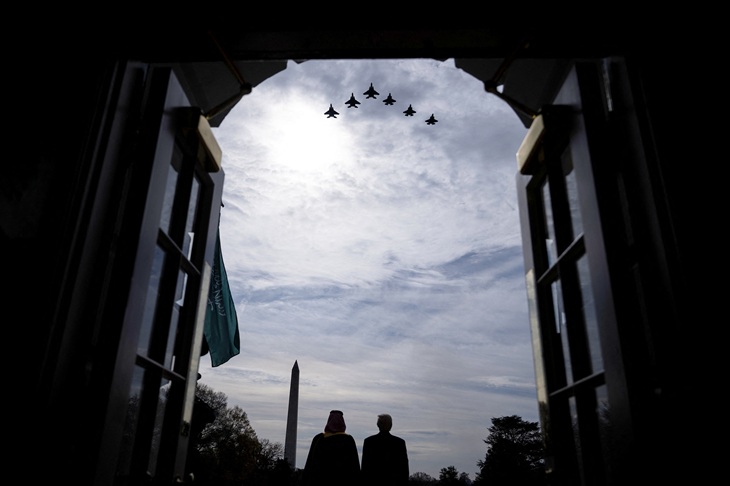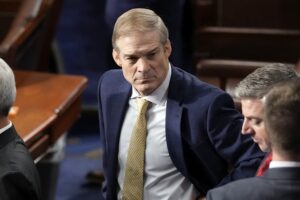
Saudi Arabia's Prime Minister Crown Prince Mohammad bin Salman Al Saud and US President Donald Trump watch a flyover of F-15 and F-35 fighter jets fly over the White House before a meeting November 18, 2025, in Washington, DC. Saudi Crown Prince Mohammed bin Salman arrived at the White House to fanfare and a jet flyover Tuesday, in his first visit to the United States since the 2018 murder of journalist Jamal Khashoggi. (Photo by Brendan Smialowski / AFP) (Photo by BRENDAN SMIALOWSKI/AFP via Getty Images)
UPDATE: U.S. naval forces have mobilized in the Caribbean, amplifying tensions surrounding Venezuela as the country’s political instability threatens to escalate into regional conflict. This urgent move comes amid concerns over Venezuela’s vast oil resources and the implications for U.S. foreign policy under the so-called Trump Doctrine.
Recent developments indicate a significant shift in U.S. strategy, with destroyer fleets positioned near Venezuelan waters as a warning to President Nicolas Maduro. The U.S. alleges that Maduro’s regime is complicit in drug trafficking, dubbed the ‘Cartel of the Suns,’ and threatens U.S. interests in the region. The stakes have never been higher, with both domestic and international observers closely monitoring the situation.
The historical context is crucial: the Roosevelt Corollary of 1904 expanded the earlier Monroe Doctrine, asserting U.S. rights to intervene in Latin America for stability. This ideological framework now influences the current geopolitical landscape, where resource-driven policies dominate. Tensions have escalated sharply over the past few months, particularly regarding a territorial dispute between Venezuela and its oil-rich neighbor, Guyana.
Venezuela’s economy, predominantly dependent on oil—accounting for 90% of its revenue—has been devastated by U.S. sanctions and mismanagement. The once-promising social reforms initiated by former leader Hugo Chavez, including free healthcare and housing, are now collapsing, as Maduro claims a 100% reduction in oil revenue due to sanctions. The dire economic situation has left millions of Venezuelans struggling to survive, heightening the urgency of the crisis.
The potential for violence is palpable. The disputed Essequibo region with Guyana poses a significant risk of conflict, especially if new oil discoveries are involved. The involvement of external powers like Russia and China adds further complexity to the situation, transforming what could be a local conflict into a broader geopolitical contest.
As the U.S. Navy maintains its presence, experts warn that the narrative for intervention is being constructed, potentially leading to a bloody conflict that could destabilize the entire region.
“America is ungovernable, for us; those who serve a revolution plough the sea,”
wrote Simón Bolívar, highlighting the ongoing struggles in Latin America. This sentiment resonates now more than ever, as the fate of Venezuela hangs in the balance.
With a new world order emerging, characterized by realpolitik and geopolitical maneuvering, the implications of these developments are profound. Analysts suggest that the U.S. military buildup is a clear signal of intent, as it prepares for any potential escalation. The situation remains fluid, and the eyes of the world are watching closely as Venezuela teeters on the brink of chaos.
Stay tuned for further updates on this evolving crisis as the international community grapples with the implications of U.S. actions in the Americas. The next steps in this high-stakes game will determine not only the future of Venezuela but also the broader geopolitical landscape of Latin America.





